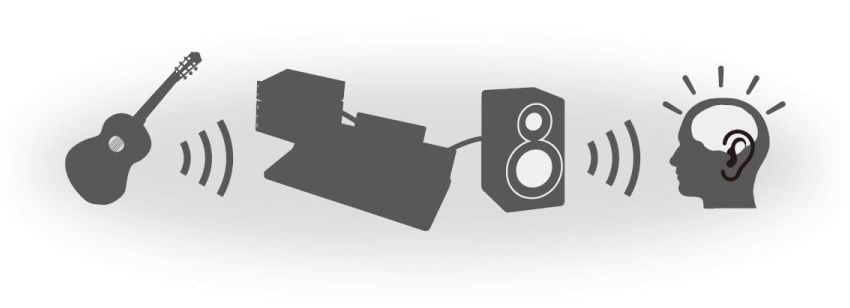Audio quality in networked systems

This white paper presents a summary of the most important quality issues in networked audio systems to support system designers and sound engineers in maximizing their system’s Performance and Response, achieving the maximum Audio Quality and Sound Quality.
Preface
Since the first professional digital audio systems were launched in the 1980s, the transition from analogue to digital in the audio industry has been close to completed: the majority of professional audio systems in the world use digital components for mixing, processing and distribution. The coming 10 years will show a follow-up transition with a similar impact: from closed systems based on point-to-point distribution topologies to open, integrated networked systems. Just as the analogue to digital transition posed new challenges for audio quality and sound quality, the transition to networked systems poses new issues - particularly concerning level and time coherency.
This white paper presents an integral analysis of quality issues in networked audio systems. It is assumed that the reader is an audio professional, familiar with audio technology, components and standards. Also, it is assumed that the reader is familiar with interpretation of level diagrams, and also with representations of signals in the time domain and frequency domain. Knowledge of digital systems and network technologies helps, but is not necessary to read the document - the authors tried to present the subjects without too much mathematical and IT jargon.
This white paper’s subject is a technical one: networked audio systems, an area that is complex by nature because it comprises systems rather than single components - increasing not only creative possibilities but also complexity. The introduction of networking technologies in the live sound field further makes designing and operating systems more complex. (but also more exciting of course). Discussing audio quality and sound quality however is not only a technical discussion - it is also a philosophical one. Before discussing anything technical, we first have to agree on the philosophical meaning of audio quality and sound quality - and share the same definitions and wording. These are presented in chapters 1 and 3 of this white paper.
Reading chapters 1 and 3 at first might be a bit odd for an audio professional, as the language used to describe audio quality and sound quality issues is a bit different from the language normally used in the professional audio field. Before reading the other - more technical - chapters, we do ask you to read these two chapters carefully because the definition and wording of quality issues is very delicate. For example: audio quality and sound quality are presented as completely different concepts, where in every day discussions the two often are mixed up. Without a thorough understanding of the difference, the technical chapters in this white paper - often referring to the concepts presented in chapters 1 and 3 - might not always make sense...
This white paper is conceived to provide an overview of quality issues in networked audio systems. By no means it is a complete or even accurate overview - a detailed presentation of every issue is far beyond the scope of this white paper. We encourage readers to study the materials suggested in the ‘further reading’ section in appendix 2.
With the launch of the CL series digital mixing systems in 2012, advanced networked audio technology with the natural sound philosophy have been introduced to the professional audio field, marking a land sliding change in the way live audio systems are designed and used. To support system designers and sound engineers to utilise these new possibilities optimally, this white paper introduces the concepts of ‘Performance’ and ‘Response’ to clarify the natural sound philosophy and its implications for Audio Quality and Sound Quality issues in networked audio systems. All with the goal to achieve fantastic sounding audio systems, in-line with the Yamaha corporate philosophy: creating Kando together.
The Yamaha Commercial Audio team.
The colors and finishes shown may vary from those on the actual products.






